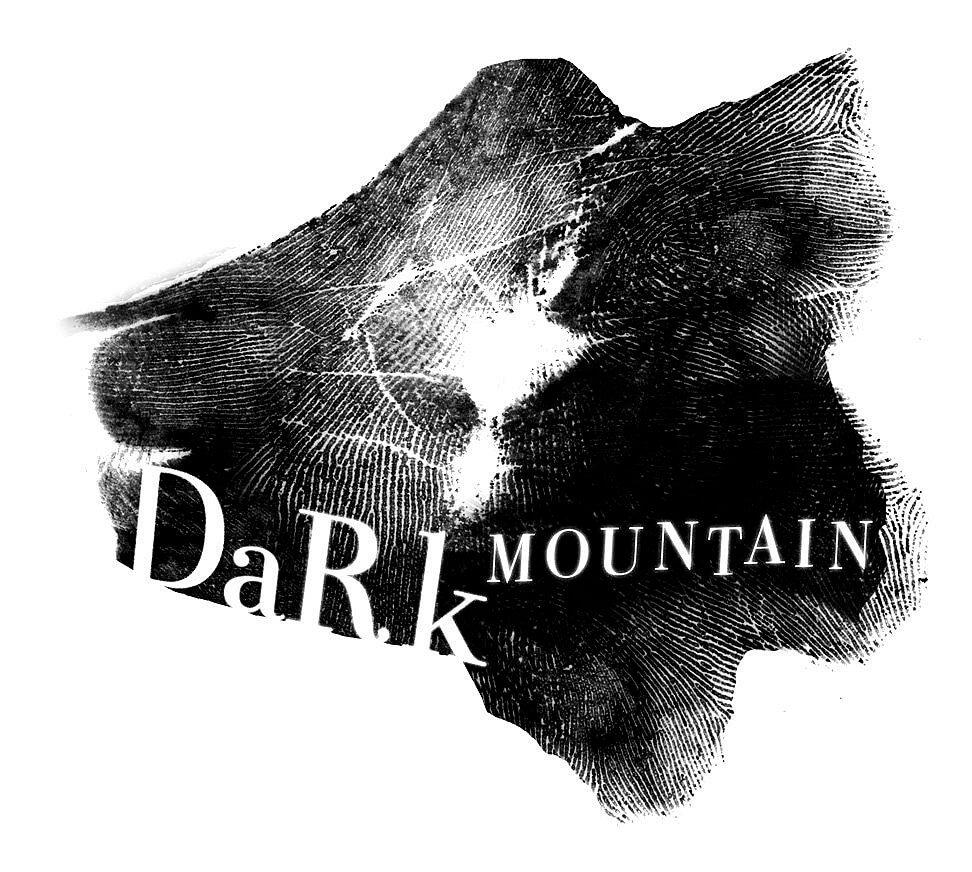Dark Mountain
- Bristol, GB
- Charlotte Du Cann,
- Dougald Hine,
- Paul Kingsnorth
- media,
- events
- ecology,
- arts
Organization information
In 2009, two English writers published a manifesto. Out of that manifesto grew a cultural movement: a rooted and branching network of creative activity, centred on the Dark Mountain journal, sustained by the work of a growing gang of collaborators and contributors, as well as the support of thousands of readers around the world.
There’s never been a simple answer to the question, ‘What is Dark Mountain?’ It’s many things, but here are a few of them.
- A conversation
It started, as lots of things do just now, on the internet. Dougald Hine and Paul Kingsnorth had been leaving comments on each other’s blogs and this led to a conversation over email, then in quiet corners of pubs. Slowly, over the months, they found enough common ground to embark on a project together.
That project has taken many forms: a manifesto, an ongoing series of books, four annual festivals and far more events, collaborations and friendships. But among all that followed, it often seems that what has mattered most to people are the quiet conversations that happen around Dark Mountain, often late at night, around a campfire or on a computer screen. Conversations where we get to name our fears, our doubts, our uncertainties and our fragile hopes.
- A manifesto
This twenty-page pamphlet took Dark Mountain out into the world, travelling further than its authors ever anticipated. It was written in the autumn of 2008, as the financial system shook to its foundations. ‘All around us, shifts are underway which suggest that our whole way of living is already passing into history.’ Not only the destabilisation of the project of economic globalisation which had dominated the preceding decades, but the fraying of the ecological foundations as a result of industrial exploitation.
Faced with this unravelling, the manifesto calls us to question the stories our societies like to tell about the world and our place within it: the myth of progress, the myth of human separation from nature, the myth of civilisation. And it claims a particular role for storytellers and culturemakers in a time when the stories we live by have become untenable. This is the project of ‘Uncivilised’ art and writing set out in the invitation which closes the manifesto.
- A series of beautifully-made books
In the pages of the Dark Mountain journal, you will meet the work of writers, thinkers and artists who have taken up the invitation made in the manifesto. Since our first issue, launched in Summer 2010, publishing these books has been the core activity of the project. Each issue takes the form of a beautifully-produced hardback where a wide mixture of voices and styles intertwine. Since 2014, we have published two issues a year – and starting with Issue 8, each year’s autumn book has broken from our established format to plunge deeper into a special theme (technology, poetics, the sacred, the land, fiction), while the odd-numbered spring issues return to the classic format and range of work. With each issue, we make a public call for contributions, so look out for the call-outs on this site, or sign up for our newsletter to make sure you hear about the next one.
- A gathering place
Before we had even published our first book, an invitation came to host a weekend of talks, performances and workshops in Llangollen, Wales. This led to the creation of Uncivilisation, an annual festival which we ran between 2010-13. It was through the festival that many of the current Dark Mountain team first met and got to know each other.
After four years, we decided it was time to lay down the responsibility of running a single annual event in one corner of the British Isles. But the opportunity to meet in person, rather than over screens, is still very much part of the life of the project – whether that is through collaborations with the organisers of larger festivals, local gatherings, talks, workshops or courses at the small schools created by Dark Mountain collaborators.
- A branching web of collaborations
This project started out with an invitation to writers and artists, people whose work could find a home within the pages of the books we wanted to publish. But it soon became clear that the manifesto was inspiring many other kinds of activity. From a huge mural on the side of a closed-down art college in Doncaster, to a number one album in Norway, to a year-long artistic workshop at Sweden’s national theatre – these are just a few of the unexpected manifestations of this widening web of collaborations.
